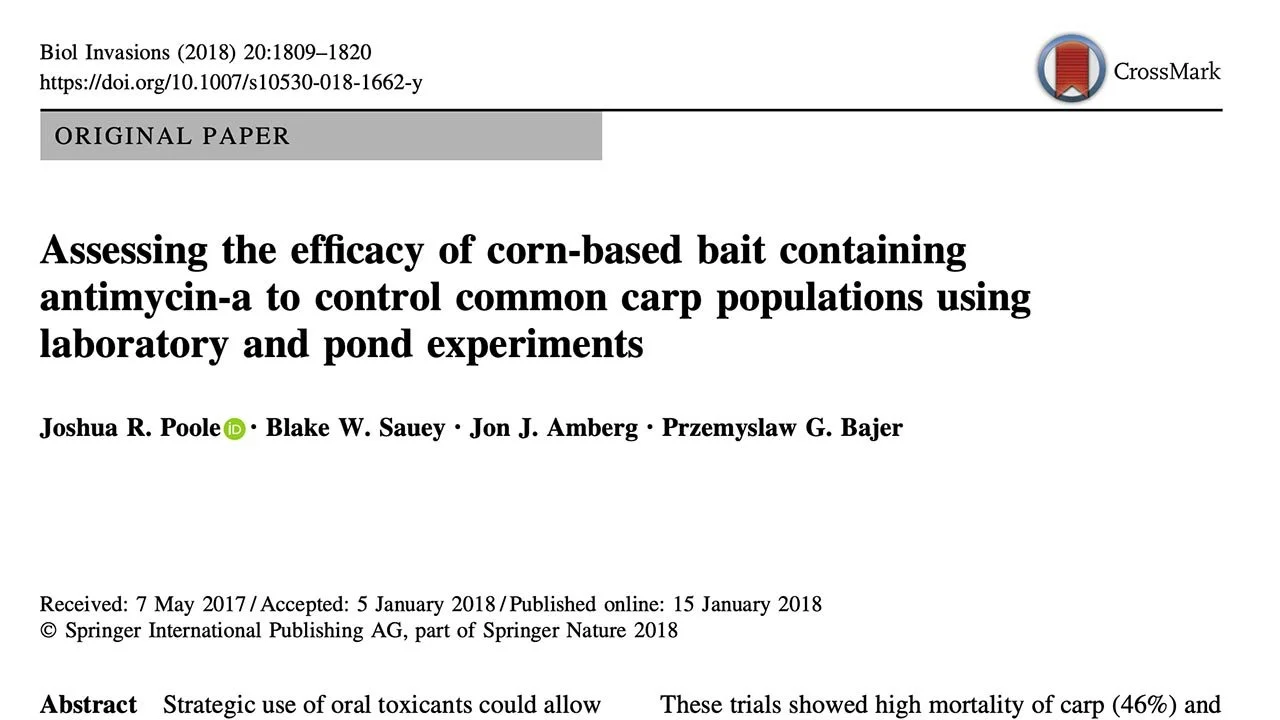Assessing the efficacy of corn-based bait containing Antimycin-A to control common carp populations
Abstract
Publisher: Springer
This 2018 study by Poole et al., published in Biological Invasions, evaluates the use of corn-based bait infused with antimycin-A (ANT-A) as a selective toxicant for managing invasive common carp (Cyprinus carpio) populations. ANT-A, a potent fish toxicant, was incorporated into bait pellets designed to exploit carp's natural feeding behavior and preferences. A series of laboratory and pond experiments demonstrated that carp experienced significant mortality (up to 47% in lab trials and 37% in pond trials) after consuming the bait, while native species such as bluegill and yellow perch remained largely unaffected.
The study showed minimal leaching of ANT-A into surrounding water, minimizing environmental risk, and confirmed that carp do not avoid ANT-A-laced bait. Fathead minnows, however, showed high sensitivity, indicating the bait is most effective in ecosystems dominated by centrarchids and percids rather than cyprinids. Researchers suggested that behavioral conditioning and targeted application—such as baiting at night or in specific zones—could further reduce non-target effects.
This research presents a promising, species-selective approach to invasive carp control in North American lakes, offering an alternative to broad-spectrum toxicants and costly physical removal. Further regulatory and environmental safety assessments are needed before widespread application.

